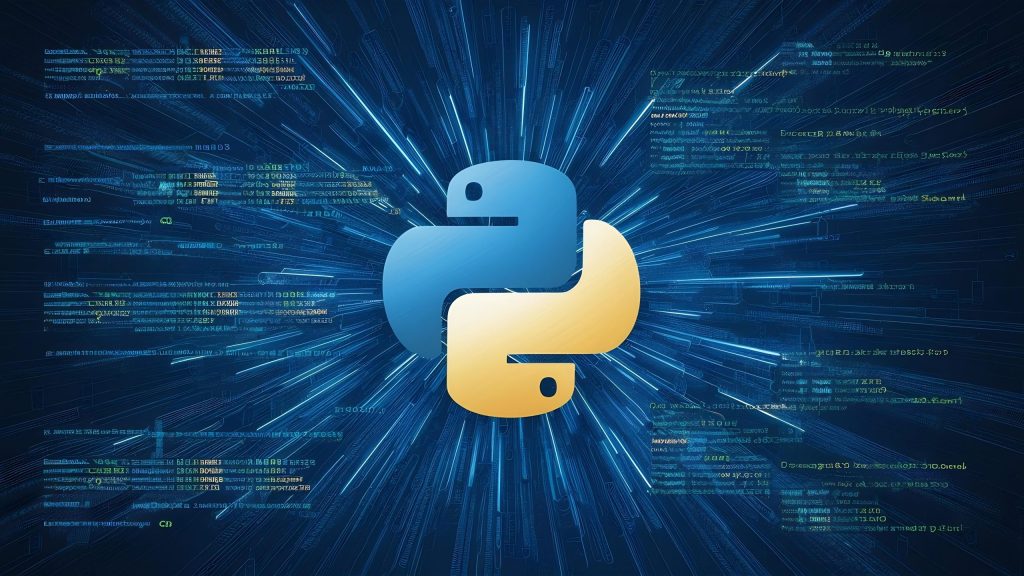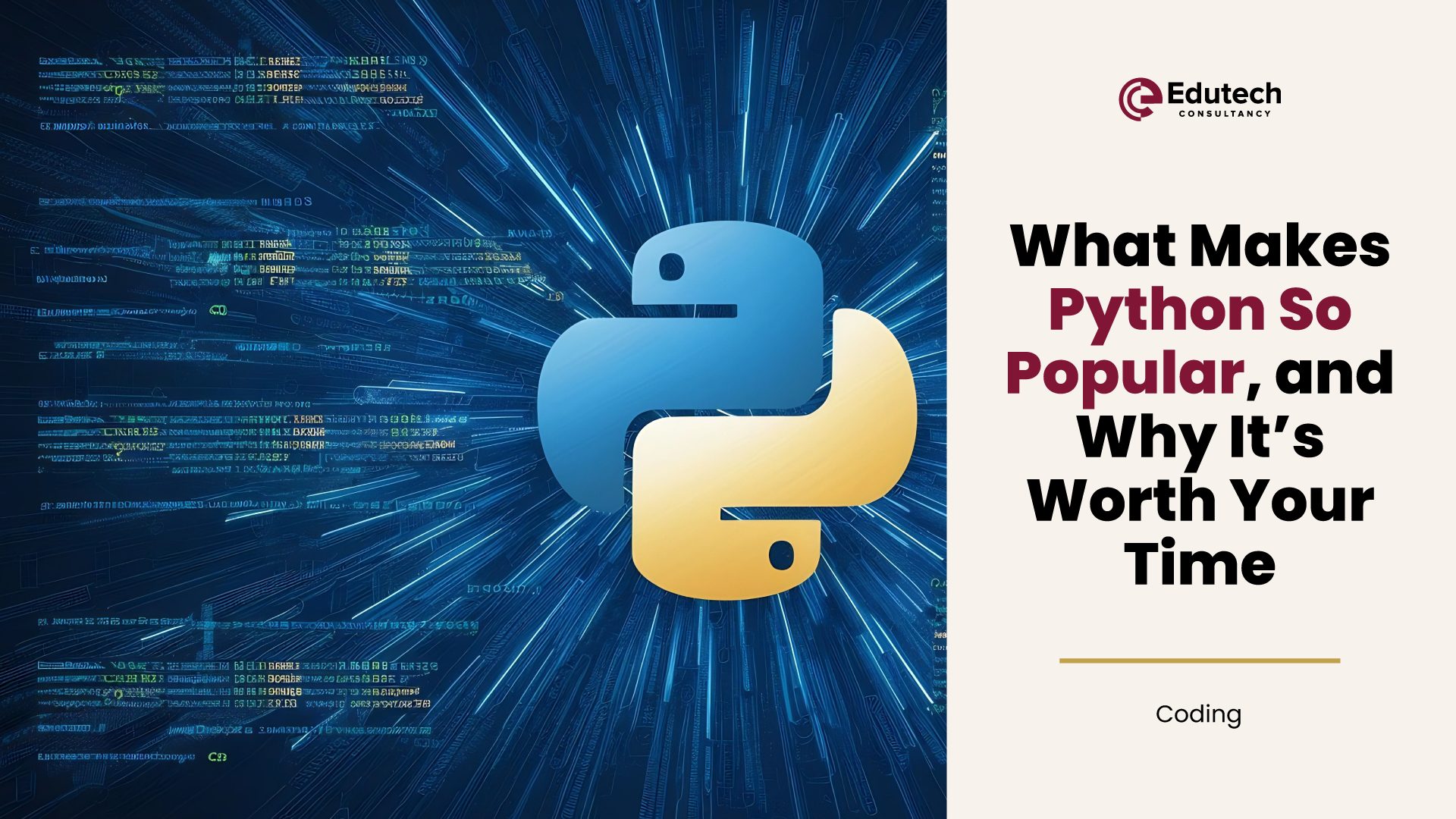What Is Python, And Why It Deserves Your Attention
Imagine a language so readable, flexible, and powerful that it quietly runs in web servers, research labs, automation tools, and more. That language is Python, a favorite among developers and non-developers alike. In this post, we’ll walk through what Python is, why it matters, and what you can do with it. No sales pitch, just clarity.
What Python Is: Python is a high-level, general-purpose programming language.
High-level means it abstracts away many lower-level concerns (like memory management), letting you focus more on logic and less on plumbing. It was created by Guido van Rossum in the late 1980s and first released in 1991.
One of Python’s signature features is its emphasis on readability. Indentation isn’t just style, it’s syntax. This leads to code that tends to be cleaner and easier to maintain.
Python supports multiple paradigms, procedural, object-oriented, functional, so you’re not locked into one style. It also has a rich standard library plus an enormous ecosystem of third-party libraries (via PyPI) that help you avoid reinventing the wheel.

Edutech Consultancy & Cisco: Bringing Python Essentials 1 Training to Learners
To make Python more accessible to learners in Qatar, Edutech Consultancy has partnered with Cisco to offer the globally recognized Python Essentials 1 Training. This program follows the official Cisco Networking Academy certification and course outline, ensuring participants receive industry-aligned, high-quality instruction. While the curriculum and certification are provided through Cisco, the training and mentoring are delivered by Edutech Consultancy’s experienced instructors, bridging global standards with local expertise.
This initiative empowers learners to build a solid foundation in Python programming, aligning with international benchmarks while catering to the growing demand for digital skills across Qatar’s workforce.
Skills You Will Learn
Design, Develop, and Debug Scripts, Computer Programming, Procedural Programming, Python, Basic Python Programming, Algorithmic Thinking, Best Practices in Programming, Entry-level, Analytical Thinking
The course also prepares you for the PCEP – Certified Entry-Level Python Programmer certification (Exam PCEP-30-0x).
Why Python Has Become So Popular
Over the past decade, Python’s popularity has skyrocketed. There are several interlocking reasons behind this rise.
1. It’s easy for newcomers
Python’s syntax resembles English in many cases. Its rules are fewer, its code more concise, and it doesn’t force you into boilerplate. That lowers the barrier to entry.
Many beginners find that writing working scripts after just a few sessions is possible. That early feedback loop, you run something that works, is motivating.
2. Versatility, use it for almost anything
Because Python has libraries for so many domains, it can be used in a wide variety of settings: web development, data science, automation, scripting, AI & machine learning, scientific computing, game development, and more.
For instance:
- With Django or Flask, build web backends.
- With NumPy, pandas, scikit-learn, create data pipelines, perform analytics, build ML models.
- Automate repetitive tasks: read files, scrape data, rename files, send emails.
- Use Python in scientific or numerical contexts for simulations, math, visualizations.
This flexibility is a major draw, you pick up one language and use it across multiple domains.
3. Large community & library support
If you run into a problem, chances are someone else has already solved it. The Python community is enormous. Many libraries are well-documented, open source, and stable.
Because of this, prototyping is fast: you can assemble pieces (libraries) rather than coding everything from scratch.
4. Productivity & developer experience
Python lets you iterate quickly. You can try out ideas fast, refactor, test, and adapt. In many contexts, what takes longer in other languages is shorter in Python.
It excels in glue code, scripting, and orchestration, connecting systems rather than building monolithic ones. Python.org
5. Industry traction & demand
Many companies, large and small, use Python in production. Examples include server-side systems, data pipelines, web services, machine learning infrastructure.
Because of that usage, demand for Python skills is strong in job markets. Learning it is a way to participate in many technology domains.
What Can You Actually Build with Python?

When people ask, “What does Python do?”, here are real, concrete use cases.
- Web applications / web APIs
Use frameworks like Django, Flask, FastAPI to build server logic, handle requests, interact with databases, serve web pages or JSON APIs. - Data science, analytics & machine learning
Ingest data, clean it, analyze trends, visualize insights, build predictive models using libraries like pandas, scikit-learn, TensorFlow. - Automation & scripting
Automate boring, repetitive tasks: file operations, web scraping, system administration, scheduled jobs. Often done via small Python scripts. - Scientific computing and simulation
Researchers, engineers, and scientists use Python to run simulations, solve differential equations, process experimental data, and visualize results. - Game development & graphics
For simpler games or prototypes, Python and libraries like Pygame are quite usable. - DevOps, scripting & tool building
Build internal tools, testing frameworks, automation scripts, system orchestration, and code integration pipelines. - Prototyping / MVPs
Because of speed and flexibility, startups often prototype in Python to validate ideas quickly before scaling further.
In short: Python is like a Swiss Army knife in software, small, focused tools or large systems, it adapts.
Why You Should Care About Python
- Versatility: Learn one language, apply it across domains.
- Accessibility: Even non-programmers often find they can pick up Python for tasks and automations.
- Ecosystem leverage: You benefit from thousands of libraries, rather than reinventing functionality
- Future relevance: Fields like data, AI, automation will likely grow, and Python is a major player there
- Bridging gap: Even if your job is not developer, Python can let you bridge to data tasks, scripting, analysis, custom tooling


